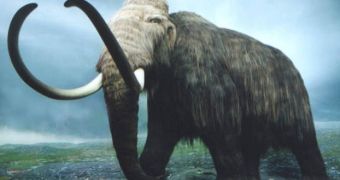In an international research effort, featuring scientists from four institutes, experts analyzed the fossilized remains of a mammoth that was discovered as low as 37°N latitude, which is far away from the higher northern latitudes where these beasts were thought to exist. Generally, when people think of mammoths, they associate them with the Arctic circle, with Siberia and with the frozen tundra, because that is there that the vast majority of their skeletons were uncovered. However, the new find shows a question mark next to the established knowledge on the habitat of the largest land mammal ever.
“These woolly mammoths finds do not belong to stray animals who only chanced to head south, but belonged to Granada's permanent inhabitants at this time,” University of Oviedo expert Diego Alvarez-Lao, who has been part of the team that investigated the fossils, explains. Natural History Museum of Rotterdam ice age expert Dick Mol, continues: “Nevertheless, the Spanish mammoths have not differed anatomically from their congeners in more northern regions.” Experts from the Senckenberg Research Institutes of Germany and the University of Madrid, in Spain, have also contributed to the finds, ScienceDaily informs.
At this point, scientists believe that the giant animal was not driven southwards by an irresistible urge to explore. What drove its migration was, most likely, the expansion of the steppe, which the mammoth called home, and which carried with it the grasses that the creature was accustomed to. “Fossil plants which have been found in drill cores from scientific drilling in Spain and the nearby Mediterranean Sea, as well as our investigations of the Padul sediments indicate that the animals lived on the plants of the mammoth steppe,” University Complutense de Madrid scientist Nuria García, who has also been part of the study, explains.
“A comparison with other sites between the 38°N and 36°N latitude shows that the animals pushed south 30 to 40 thousand years ago also in areas outside of Europe,” Ralf-Dietrich Kahlke, a paleontologist at the Senckenberg Research Institutes, adds. The researcher mentions that there were obstacles preventing the mammoths from spreading too far, such as large mountain chains, including the Sierra Nevada and the Rocky Mountains.
Additionally, the study highlights, this is the first paper to document the mammoths' push southwards in many places in the world at once, from Europe (Spain and Italy), North America, the Kamchatka Peninsula, as well as northern China and Japan. “This is proof that global mechanisms which regulated climate already during the ice age also influenced vegetation and with it also animal migration,” Kahlke says, adding that weather patterns and climate events in the northeast Atlantic and the northwest Pacific regions may have played a decisive role in the climate change that allowed for the animals to spread.

 14 DAY TRIAL //
14 DAY TRIAL //